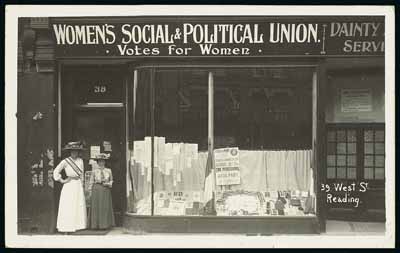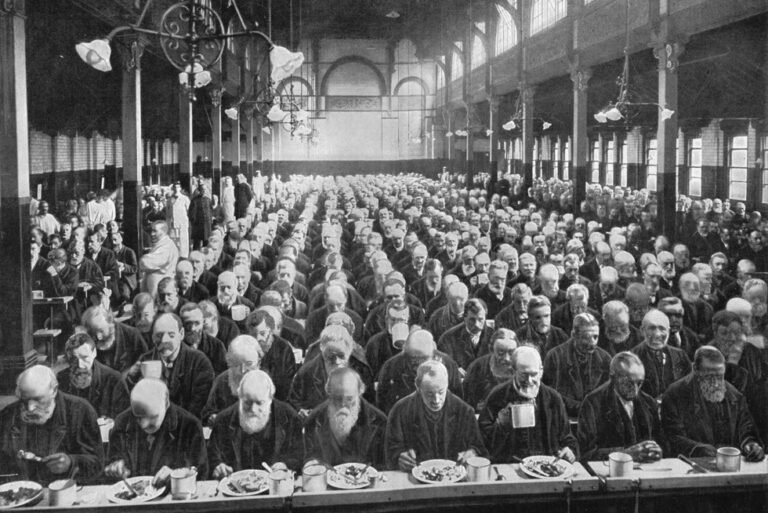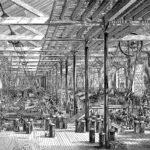The Women’s Social and Political Union (WSPU) played a vital role in history. This group fought tirelessly for women’s suffrage in the UK.
The Women’s Social and Political Union
Founded in 1903 by Emmeline Pankhurst and her daughters, the WSPU was a powerhouse of activism. They believed in direct action to gain the right to vote. Their motto, “Deeds, not words,” echoed their commitment to change. These women organized protests, marches, and even hunger strikes.
Their efforts were not without challenges. They faced arrests, force-feeding, and public backlash. Yet, their courage and determination left a lasting impact. The WSPU’s legacy continues to inspire women’s rights movements worldwide. Understanding their story helps us appreciate the freedoms we enjoy today. Join us as we delve into the history and significance of the WSPU.
Origins And Formation
The Women’s Social and Political Union (WSPU) was a pivotal organization. It played a significant role in the British women’s suffrage movement. The group fought tirelessly for women’s right to vote. It marked a new era in the struggle for gender equality. Understanding its origins and formation offers insight into its impact.
Founding Members
The WSPU was founded in 1903 in Manchester. Emmeline Pankhurst and her daughters, Christabel and Sylvia, were key figures. These women wanted to take a more militant approach. They felt peaceful protests were not enough. Their efforts drew attention to the cause.
Early Goals
The early goals of the WSPU were clear and focused. They aimed to achieve voting rights for women. They wanted to challenge the existing political system. Their slogan “Deeds, not words” reflected their commitment. They organized protests, rallies, and even hunger strikes. These actions highlighted their determination and bravery.

Credit: en.wikipedia.org
Key Figures
The Women’s Social and Political Union (WSPU) was a groundbreaking movement. It played a vital role in the fight for women’s suffrage in the UK. Several key figures drove this movement forward. They inspired many and left a lasting impact on history.
Emmeline Pankhurst
Emmeline Pankhurst was the founder of the WSPU. Born in 1858, she became one of the most influential leaders in the fight for women’s voting rights. Emmeline’s passion and dedication were unmatched. She believed in direct action to bring about change.
In 1903, she established the WSPU. Her vision was clear: women must have the right to vote. Under her leadership, the WSPU adopted the motto “Deeds, not words.” This reflected their commitment to taking direct action. Emmeline’s efforts were instrumental in advancing the suffrage movement. She inspired countless women to join the cause.
Christabel Pankhurst
Christabel Pankhurst was Emmeline’s eldest daughter and a key figure in the WSPU. Born in 1880, she was a skilled speaker and organizer. Christabel was known for her strategic mind and bold actions. She played a significant role in shaping the WSPU’s tactics.
Christabel’s contributions were vital to the movement’s success. She was arrested multiple times for her activism. Yet, her resolve remained firm. Christabel’s leadership helped the WSPU gain significant attention and support. Her work paved the way for women’s suffrage in the UK.
Major Campaigns
The Women’s Social and Political Union (WSPU) led several major campaigns to fight for women’s rights. Their efforts were persistent and often met with resistance. They used various strategies to make their voices heard and to push for change.
Suffrage Marches
The WSPU organized suffrage marches to draw attention to their cause. Thousands of women marched through the streets holding banners and signs. These marches showed solidarity and strength. They were a powerful way to show public support for women’s right to vote.
During these marches, women from all walks of life joined together. They sang songs and chanted slogans. This created a sense of unity and purpose. The sight of so many women marching for their rights was inspiring to many.
Hunger Strikes
Hunger strikes were another method the WSPU used. When imprisoned, many suffragettes refused to eat. Hunger strikes were a form of protest against their unfair treatment. It was a risky tactic but it gained attention and sympathy.
The government responded by force-feeding the hunger strikers. This brutal method caused public outcry and highlighted the harsh conditions suffragettes faced. It brought more support to their cause and increased public awareness.
Tactics And Strategies
The Women’s Social and Political Union (WSPU) was known for its bold tactics and strategies. These methods helped to bring attention to the fight for women’s suffrage. They used various forms of civil disobedience and public demonstrations to make their voices heard.
Civil Disobedience
The WSPU employed various civil disobedience tactics. Members refused to pay taxes and fines. They also broke windows and chained themselves to railings. These acts were designed to disrupt daily life. Their aim was to get the government’s attention.
Here are some key tactics:
- Refusing to pay taxes
- Chaining themselves to railings
- Breaking windows
- Hunger strikes in prison
These acts were risky. Many women were arrested and jailed. Yet, they continued their fight. Their persistence highlighted the lengths they would go for their cause.
Public Demonstrations
Public demonstrations were another key strategy. The WSPU organized large rallies and marches. These events drew huge crowds and media attention. They held speeches and parades to spread their message.
Some notable demonstrations include:
| Event | Date | Description |
|---|---|---|
| Women’s Sunday | 21 June 1908 | Mass meeting in Hyde Park, London |
| Black Friday | 18 November 1910 | Protest at Parliament, many women assaulted |
| The Great Pilgrimage | June-July 1913 | Nationwide march ending in London |
The WSPU’s public demonstrations were powerful. They showed the unity and determination of women. These events helped to gain public support for their cause.
Impact On Society
The Women’s Social and Political Union (WSPU) had a significant impact on society during the early 20th century. This militant organization, founded by Emmeline Pankhurst and her daughters, played a crucial role in advocating for women’s rights. Their actions and campaigns brought about changes in various aspects of society, particularly in legal reforms and public opinion.
Legal Reforms
The WSPU’s efforts led to several legal reforms that benefited women. Their activism helped to bring the issue of women’s suffrage to the forefront of political debate. As a result, women eventually gained the right to vote.
- 1918: Women over 30 gained the right to vote.
- 1928: Equal voting rights granted to all women over 21.
Their persistent campaigning also influenced other areas of law. For instance, changes in property rights and employment laws. These reforms provided women with more opportunities and greater equality in society.
Public Opinion
The WSPU’s actions significantly influenced public opinion about women’s rights. Their bold and sometimes controversial methods drew attention to their cause. This included protests, hunger strikes, and public speeches.
Before the WSPU, many people believed women should not have the same rights as men. The WSPU’s actions challenged these beliefs. They showed that women were capable of political engagement and deserved equal rights.
As a result, more people began to support women’s suffrage. The media coverage of their activities also helped to spread their message. This shift in public opinion was crucial in achieving their goals.
| Year | Event |
|---|---|
| 1903 | WSPU founded |
| 1913 | Emily Davison’s protest |
| 1918 | Women over 30 gained right to vote |
| 1928 | Equal voting rights for all women over 21 |
Overall, the WSPU’s legacy is evident in the legal reforms and shifts in public opinion. Their work laid the foundation for future advancements in women’s rights.

Credit: www.linkedin.com
Opposition And Challenges
The Women’s Social and Political Union (WSPU) faced many opposition and challenges. Their fight for women’s suffrage wasn’t easy. They encountered resistance from the government and media. These forces worked hard to suppress their movement. Let’s explore how this opposition manifested.
Government Response
The government viewed the WSPU as a threat. They took harsh actions against the activists. Police often arrested and imprisoned WSPU members. In prison, they faced poor treatment. Authorities tried to break their spirit with harsh conditions. Some went on hunger strikes in protest.
The government responded with force-feeding. This was a painful and degrading process. It showed the lengths they would go to suppress the movement. The Cat and Mouse Act was another tactic. This law allowed temporary release of hunger-strikers. Once they regained strength, they were re-arrested. This cycle aimed to weaken their resolve.
Media Portrayal
The media often portrayed the WSPU negatively. Newspapers labeled them as disruptive and violent. They focused on the more militant actions. This created a biased image of the movement. Many articles ignored the reasons behind their protests. Sensational headlines sold more papers.
Some journalists used derogatory terms for the women. They aimed to belittle their efforts and goals. This negative portrayal influenced public opinion. Many people saw the suffragettes as troublemakers. It became harder for the WSPU to gain widespread support. Despite this, they continued their fight for equality. Their determination remained strong.
Legacy And Influence
The Women’s Social and Political Union (WSPU) left a lasting legacy. Their influence is still evident in today’s society. The WSPU’s fight for women’s rights changed history. Let’s explore their impact on modern feminism and their historical significance.
Modern Feminism
The WSPU inspired modern feminist movements. Their courage and determination still resonate. Many modern activists look to the WSPU for inspiration. The group’s tactics and strategies are studied and admired. Their push for gender equality paved the way for future generations.
Today’s feminists continue the WSPU’s mission. They fight for equal pay, reproductive rights, and political representation. The WSPU’s legacy empowers women worldwide. Their work reminds us of the importance of perseverance and solidarity.
Historical Significance
The WSPU played a crucial role in history. They challenged the status quo and demanded change. Their efforts led to significant political and social reforms. The group was instrumental in securing women’s right to vote in the UK.
The WSPU’s actions raised awareness about women’s issues. They brought attention to gender inequality and injustice. Their legacy lives on in history books and educational programs. The WSPU’s story is a testament to the power of activism.
Understanding the WSPU’s historical significance helps us appreciate today’s freedoms. Their sacrifices and struggles shaped our present. The WSPU’s influence can still be felt in our ongoing quest for equality.

Credit: editions.covecollective.org
Personal Stories
The Women’s Social and Political Union (WSPU) was more than a movement. It was a collection of brave women fighting for their rights. Their personal stories reveal their struggles, sacrifices, and triumphs. These stories bring to life the passion and determination of the women involved.
Individual Sacrifices
Many women of the WSPU faced prison time. They endured hunger strikes. Emmeline Pankhurst, the leader, was arrested multiple times. She believed in “deeds, not words.” Her daughters, Christabel and Sylvia, also made huge sacrifices. They left their careers to join the fight. Their dedication was unwavering.
Other members went through personal hardships. Some were disowned by their families. Others lost their jobs. The fight for suffrage was not easy. It required real courage and determination.
| Member | Sacrifice |
|---|---|
| Emmeline Pankhurst | Multiple arrests, hunger strikes |
| Christabel Pankhurst | Left her law career |
| Sylvia Pankhurst | Disowned by family |
Inspirational Accounts
The stories of the WSPU women are inspirational. Emily Wilding Davison is one such figure. She is famous for her tragic act of protest. She stepped in front of the king’s horse at the Epsom Derby. Her death brought national attention to the suffrage movement.
Another inspiring story is that of Annie Kenney. She worked in a factory before joining the WSPU. She was the only working-class woman to become a leader in the movement. Her journey from a factory worker to a suffrage leader inspired many.
- Emily Wilding Davison: Died for the cause
- Annie Kenney: From factory worker to leader
The sacrifices and inspirational accounts of these women show the depth of their commitment. Their stories continue to inspire new generations. They remind us of the power of determination and the importance of standing up for what is right.
FAQs
What Was The Women’s Social And Political Union?
The Women’s Social and Political Union (WSPU) was a British suffragette organization. It was founded in 1903 by Emmeline Pankhurst. The WSPU aimed to secure women’s right to vote.
Who Founded The Women’s Social And Political Union?
Emmeline Pankhurst founded the Women’s Social and Political Union. She established it in 1903 in Manchester. The organization fought for women’s suffrage in the UK.
What Methods Did Wspu Use?
The WSPU used militant tactics to gain attention. They organized protests, hunger strikes, and sometimes engaged in vandalism. Their motto was “Deeds, not words”.
Why Was The Wspu Important?
The WSPU played a crucial role in the women’s suffrage movement. Their efforts led to increased awareness and support. Eventually, their activism contributed to women gaining the right to vote.
Conclusion
The Women’s Social and Political Union played a vital role in history. Their efforts pushed for women’s rights and gender equality. They faced many challenges but remained determined. Their legacy continues to inspire and empower women today. Understanding their struggle helps us appreciate the progress made.
It also reminds us that the fight for equality is ongoing. We must honor their courage and continue their work. Their story is a testament to the power of collective action. Together, we can achieve lasting change.







